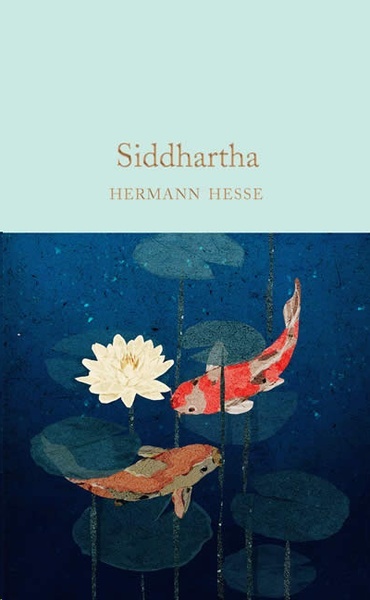Siddhartha

Editorial Pan
Colección Macmillan's Collector's Library, Número 0
Fecha de edición octubre 2020 · Edición nº 1
Idioma inglés
EAN 9781529024043
208 páginas
Libro
encuadernado en tapa dura
Dimensiones 101 mm x 158 mm
Resumen del libro
Told in a simple mythical style, the story of Siddhartha is an inspirational classic by Hermann Hesse, winner of the Nobel Prize for Literature. Part of the Macmillan Collector's Library, a series of stunning, clothbound, pocket-sized classics with gold-foiled edges and ribbon markers. These beautiful books make perfect gifts or a treat for any book lover.
This edition is translated from German by Hilda Rosner with an introduction by John Peacock. Siddhartha, the son of a wealthy Brahmin, is unable to find peace within his own religion and community so sets off on his travels through India in search of enlightenment. First he spends time with a group of ascetics called Samanas.
For a while he embraces their doctrine and rejects all worldly goods. When he hears about a man called Gotama the Buddha he leaves the Samanas. However Buddhist teaching disappoints him and he realizes that self-discovery must come from his own experiences.
He rejects the spiritual life, takes a lover and becomes a rich merchant. But after some years, dissatisfied with materialism, he takes off again in search of the spiritual peace he longs for.
Biografía del autor
x{0026}lt;P x{0026}lt;B Hermann Hessex{0026}lt;/B (1877-1962), novelista y poeta alemán, nacionalizado suizo. Premio Nobel de Literatura en 1946, es una figura de culto en el mundo occidental por su celebración del misticismo oriental y la búsqueda del propio yo, muy influenciado por el psicoanálisis junguiano. Abandonó pronto la escuela y fue autodidacta a base de numerosas lecturas. La desesperanza y la desilusión que le produjeron la Primera Guerra Mundial y una serie de tragedias domésticas, y sus intentos por encontrar soluciones, se convirtieron en el asunto de su posterior obra novelística. Sus escritos se fueron enfocando hacia la búsqueda espiritual de nuevos objetivos y valores que sustituyeran a los tradicionales, que ya no eran válidos. Es autor de varias novelas como x{0026}lt;I Peter Camenzindx{0026}lt;/I (1904), x{0026}lt;I Bajo las ruedasx{0026}lt;/I (1906), x{0026}lt;I Demian x{0026}lt;/I (1919), x{0026}lt;I Viaje al Estex{0026}lt;/I (1932), x{0026}lt;I Siddhartha x{0026}lt;/I (1922), x{0026}lt;I El lobo estepariox{0026}lt;/I (1927), quizá su novela más innovadora, x{0026}lt;I Narciso y Goldmundox{0026}lt;/I (1930) y x{0026}lt;I El juego de abaloriosx{0026}lt;/I (1943), que cada vez se hicieron más simbólicas y cercanas al psicoanálisis.x{0026}lt;/P








